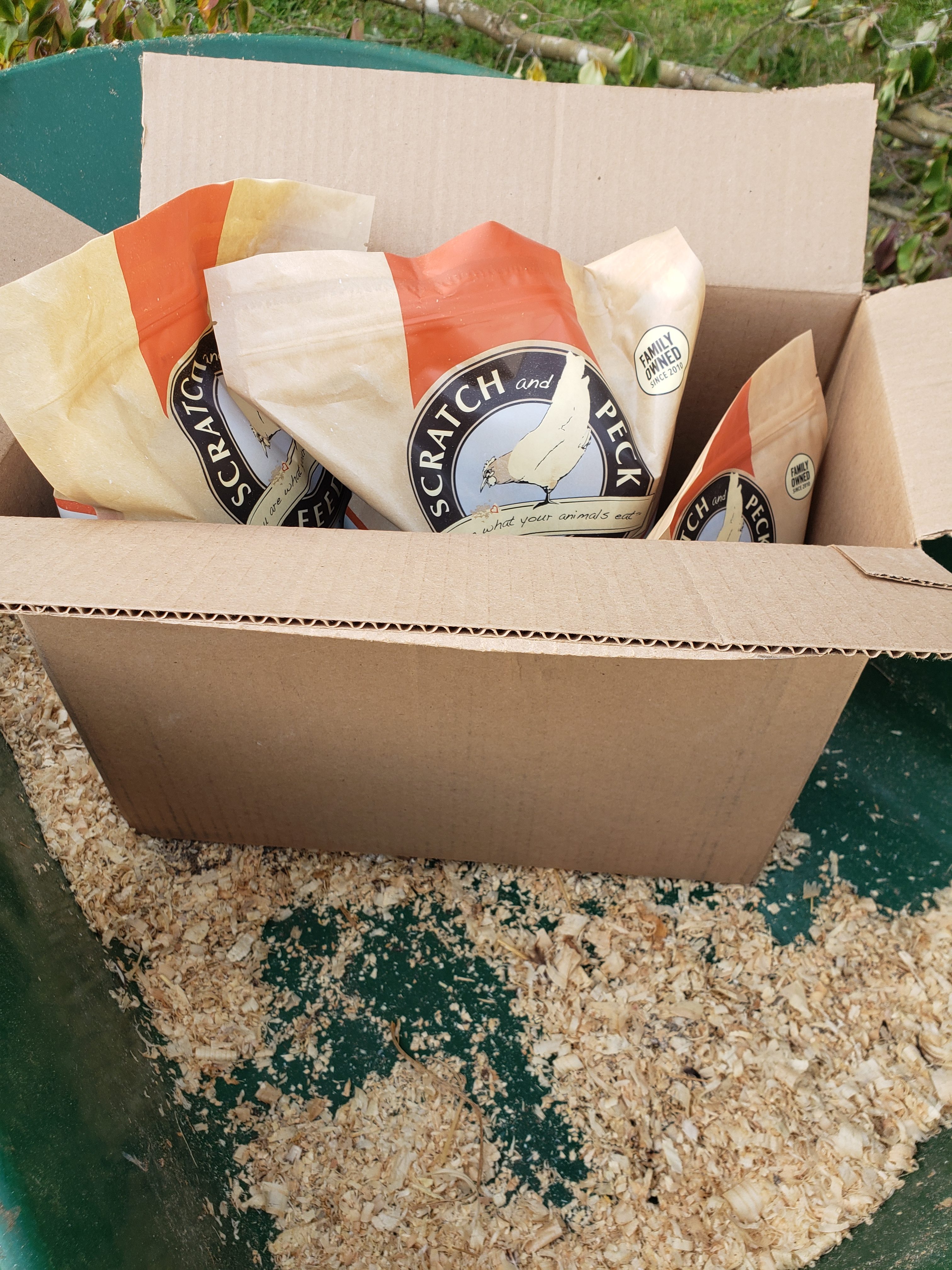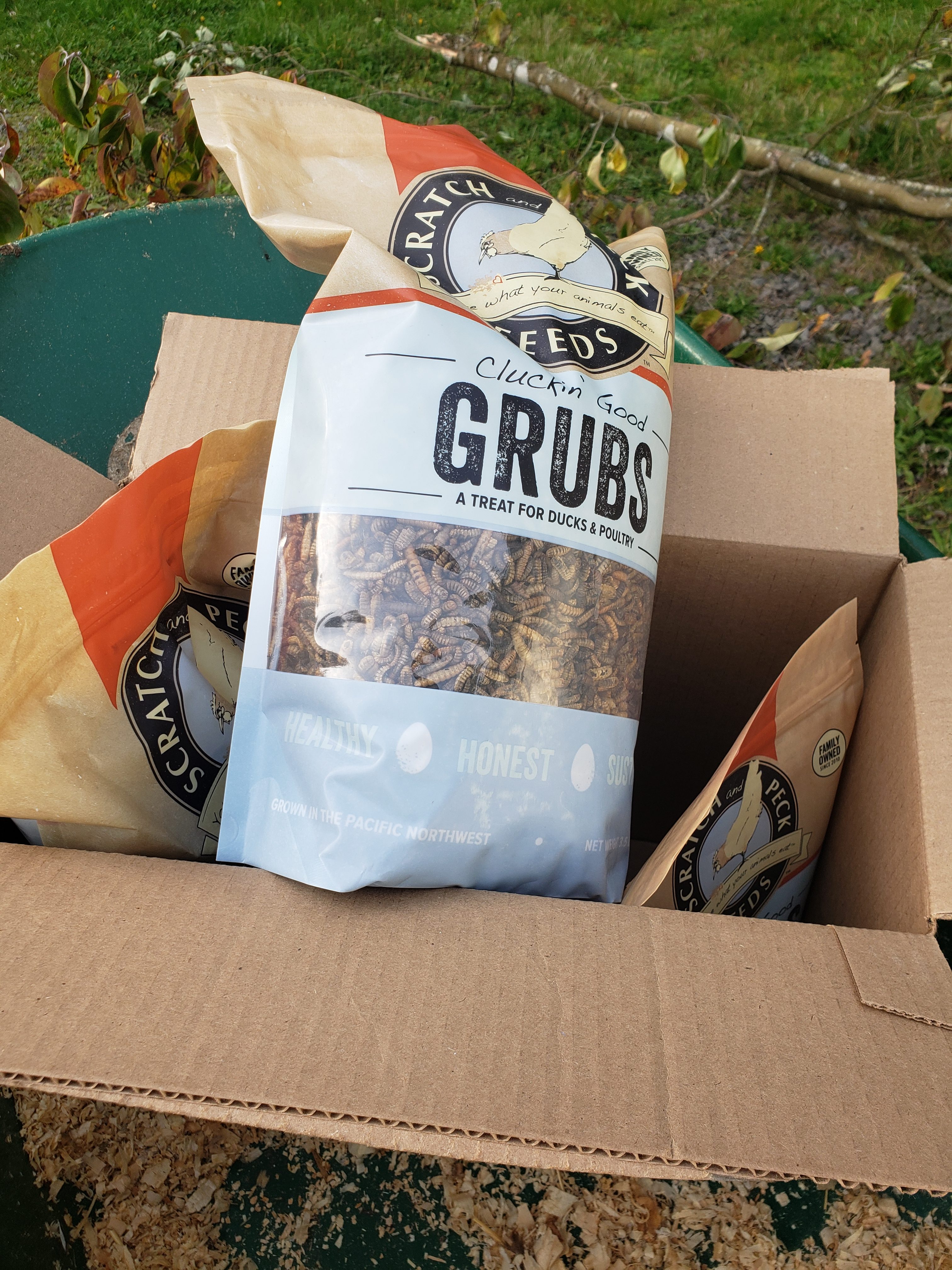What is molting?
Expert Janet Garman, author of “50 Do-It-Yourself Projects for Keeping Chickens” tells us that as daylight begins to shorten, it’s time for molting season. The chickens may lose feathers!
That is certainly the case with our chickens. I have one silver-laced Wyandotte that is going through a hard molt. I feel terrible for her. Some of my hens are going through a hard molt and others haven’t lost any feathers at all. The age across our two flocks varies as some are just one-year-old while others are much older.
Most of our hens have stopped laying eggs too since there isn’t as much daylight. I don’t add artificial light, but recommend letting their bodies rest this time of year.
Chickens will stop laying if they’re molting as it takes all their energy and protein intake to grow new feathers so eggs are off the table anyway!
Garman adds that “the molt will start on the head and work towards the tail. Some chickens have an easier time with the molt and you might not notice the rougher appearance. Other chickens will look like they have shaken all their feathers off at once.”
Why do chickens molt?
Backyard Poultry explains the basics of molting.
“Molting is a natural and necessary process by which chickens lose old, broken, worn out and soiled feathers for new plumage on a regular basis. It is important that a chicken grow new feathers from time to time because the integrity of a bird’s feathers affects how well that bird is able to keep itself warm in cold weather.”
It’s already getting cold in Southwest Washington and some of my birds are taking a long time to molt. And some birds will even molt for as long as six months.
When do chickens molt?
Scratch and Peck Feeds tell us that this process is completely normal.
“Molting typically begins around 18 months of age and occurs annually thereafter (younger birds will experience a molt in the first month to replace their down with feathers).”
My Wyandotte chickens are all over 3-years-old so I’m not stunned they’re going through a hard molt this season.
What can I give the ladies during this stressful time?

Protein! Grubs!

Protein-rich treats should be provided during the molting season, but still only making up about 10% of their diet. Some examples of high protein treats that can be easily provided include sunflower seeds or other nuts (raw and unsalted), peas, soybeans, meat (cooked), cod liver oil, or bone meal.
What about bugs like Scratch and Peck’s Cluckin’ Good Grubs?
Here’s a great fact: feathers are high in protein – between 85 – 90%.
My bird’s free-range all day and they hunt for bugs the minute they are let out of our mobile coops. Yet I also like to supplement with Scratch and Peck’s Cluckin’ Good Grubs, which are approximately 34% protein. These grubs are dried Black Soldier Fly Larvae.
Cluckin’ Good Grubs are raised less than 100 miles from Scratch and Peck Feeds’ mill. The larvae are raised on pre-consumer waste foods, which puts food that would otherwise be tossed to much better use – sustainably-raised bugs to help feather regrowth!
I feel awful for the chickens that are molting and one of our Polish chickens looks miserable as her top knot feathers come back in. I think she knows her head feathers are so beautiful and this molt is rather embarrassing!
If you have any questions, please leave a comment below!
Disclaimer: This is sponsored. We received product and compensation in exchange for an honest review. I only share information about products that I believe in and already fit into our doggie & chicken lifestyle and routine.
Medical Disclaimer: I’m not a Vet so please check with your Vet or holistic vet when you start transitioning feed for any small animal.



